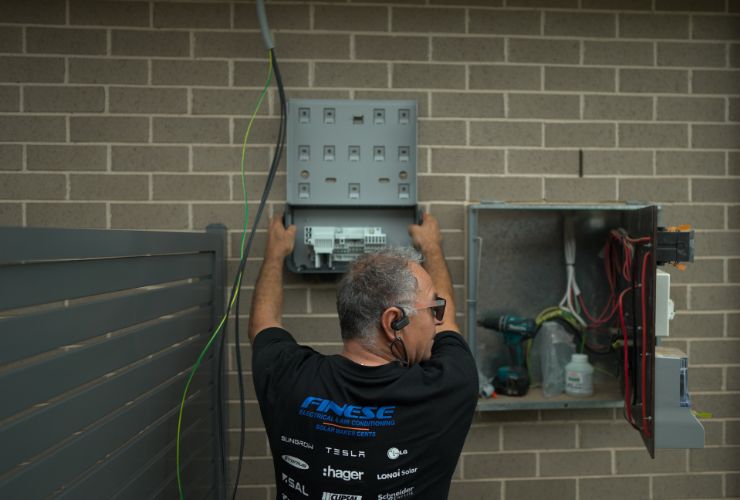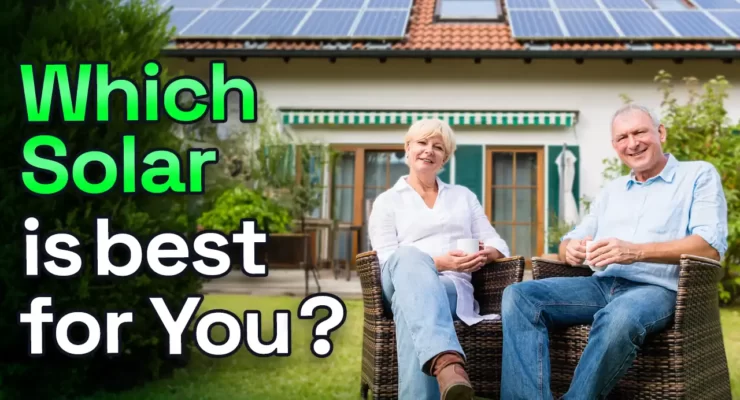Fast read
When choosing a solar power system, there are several factors to consider such as energy needs, location, roof condition, budget, and local regulations. Start by assessing your energy consumption requirements and use that information to determine the required size of the system.
Consider the amount of sunlight your location receives, as well as your budget and financing options, such as loans or leases.
Ensure the system meets all local regulations and incentives. Working with a local quality-focused solar energy professional can help you assess these factors together and choose a system that meets your needs and budget.
Consider adding a battery to your solar system and also enquire about other renewable energy products, but engage with a qualified local supplier or installer for extensive advice.
Choosing the right solar power system
Suppose you are looking to purchase a high-quality solar power system or consider getting a solar & battery combination. In that case, you must consider various factors to ensure you select the right solar system that suits your circumstances.
What energy needs do you have now and in the future?
Before looking at solar, you must establish your energy habits and trends. This will allow you to determine your energy consumption requirements.
How you can go about doing this involves assessing the amount of energy used and at what periods of the day you may be using this. Make sure you also consider any changes that may occur in the future. You can do this by looking at your current electricity bill. However, solar installers often want to assess this for you, and if you have a smart meter, past consumption data can be sourced from there.
Solar system sizing
In the olden days because of the rebate structure and cost of solar, many customers chose a 1, 1.5, or 2kW solar system, which makes a small dent in your power bill. Nowadays, with panel and inverter prices having dropped significantly, we recommend for a single person or a couple a 3 to 5 kW solar array, with 6.6 being the upper limit.
A family of 4 would do well with a 6.6 to 8kW system, and if batteries and EVs come into play, add another 3 to 6 kW to the system size. Sometimes, the simple solution is – to install as much solar as your roof allows.
The key determining factor of your future PV solar system size is your past electricity use. Your installer can help you interpret past bills and use this information to recommend a specific PV system size. Here at your Energy Answers.com, we also have developed a calculator to assist you in determining the most appropriate system size.
Location
Before purchasing the right solar system, consider where you live and the amount of sun your roof gets as one of the more crucial considerations.
This is because if you are living somewhere that gets a lot of sunlight year-round, you may not need the largest system to meet your energy demands, and instead, you may be able to opt for a smaller solar system. If, on the other hand, you reside in Melbourne or Tasmania and have a sizable family, with some family members being home all day, a substantial PV system is a must.
You can use online tools, including some on our site, or consult a solar energy & battery professional to determine the average amount of sunlight your location receives throughout the year.

Do I put solar on the roof, get a solar carport or a PV array on the ground?
A solar carport could be an option, or even putting an array on the ground could be considered. In such circumstances, you also would opt for the most efficient panels to get the highest generation from your limited space.
What is my budget?
Your budget is also an essential factor to consider when choosing the right solar power system. Solar power systems can vary in cost depending on the size and type of system, and if you go solar only or solar, a storage battery and EV charger combined. As well as any additional features or components, such as a separate monitor solution such as Solar Analytics, choosing a system that fits your budget while meeting your energy needs is vital.
The large solar sales companies promoting systems in a low price range of only 50% of what an excellent local solar installer would charge do not deliver a quality, long-lasting system, despite the thousands of fake online reviews pretending to say otherwise.
You then pay the provider of the system for the solar power and power stored in the battery – just like you would pay to an energy retailer, except that the price per kWh is more in the 20cents range than the 35 cents plus range – so one can save around 30 to 40% of the electricity bill, without ever having to pay a cent. Check this out here:

Finance can be an option
Several financing options are also available for the right solar power and battery systems, including loans, leases, and power purchase agreements (PPAs). These options can help make solar power more accessible and affordable for homeowners and businesses. A quality installer can outline the options.
Local regulations
Finally, you must consider any local regulations or incentives that may affect the type of solar power system you can install. Some areas may have regulations limiting the amount of solar energy you can export. In that case, ensure you send your excess solar into your hot water tank, maybe via a heat pump, or into your pool heating or battery, so you do not lose your renewable PV electricity.
The critical solar system components
Together with the essential steps that will be taken to install a solar panel system, learn about the key components.
Solar panels
Solar panels come in two forms: monocrystalline and polycrystalline. Polycrystalline panels are less efficient than monocrystalline panels and are now sold less often.
The monocrystalline panels now come in a new version called N-type. Without boring you with the technical differences, N-type monocrystalline panels degrade less over the years and are usually more efficient but cost a little more. For quality, N-type monocrystalline panels are a good choice.

Inverter
The solar inverter transforms the DC power produced by the solar panels into AC power for your home, which is a crucial part of the right solar power system. String inverters and microinverters/optimisers technology are the two main types of solar inverter solutions.
Multiple solar panels are connected in one string and then attached to a string inverter. The string inverter is usually installed on a less sunny wall or in your garage.
Alternatively, each solar panel has a microinverter/optimiser, which converts the DC electricity to AC power at the panel level. Although more expensive, microinverters have some specific advantages, and you can learn more about this here.
Solar Batteries
While not essential for every solar PV system, battery storage proves beneficial for residences with greater energy needs, frequent power outages, or intentions to use an electric vehicle. You can use the extra energy produced by the solar panels during the day by storing them in batteries so that you can use them at night or when there is little sunlight. You can also use this battery power to charge your EV, effectively running it on solar power.
The battery brands Tesla Powerwall, Sungrow, BYD and Sonnen are well-known and reliable, providing high-quality products. Enphase has recently also launched a new battery range which has been well received.
Summary
Unfortunately, to get the right solar system and battery solution, you need to undertake a little homework. We don’t suggest obtaining 10 or even 15 quotes, as we’ve seen on some occasions because that might leave you confused and exhausted. However, ensure you conduct research and explore more than one supplier or installer.
A quality-focused and honest operator will give you more than one option to accommodate your circumstances and budget. Avoid anyone who shows signs of sales pressure and fast deadlines. Such operators want you NOT to spend time on research, as you would discover that their “unbeatable offer” was not that good after all.
So selecting the right solar power system needs careful consideration of many variables, such as energy requirements, property details, solar panel type, solar inverter technology, monitoring solution, battery storage as an option, financial constraints etc.



